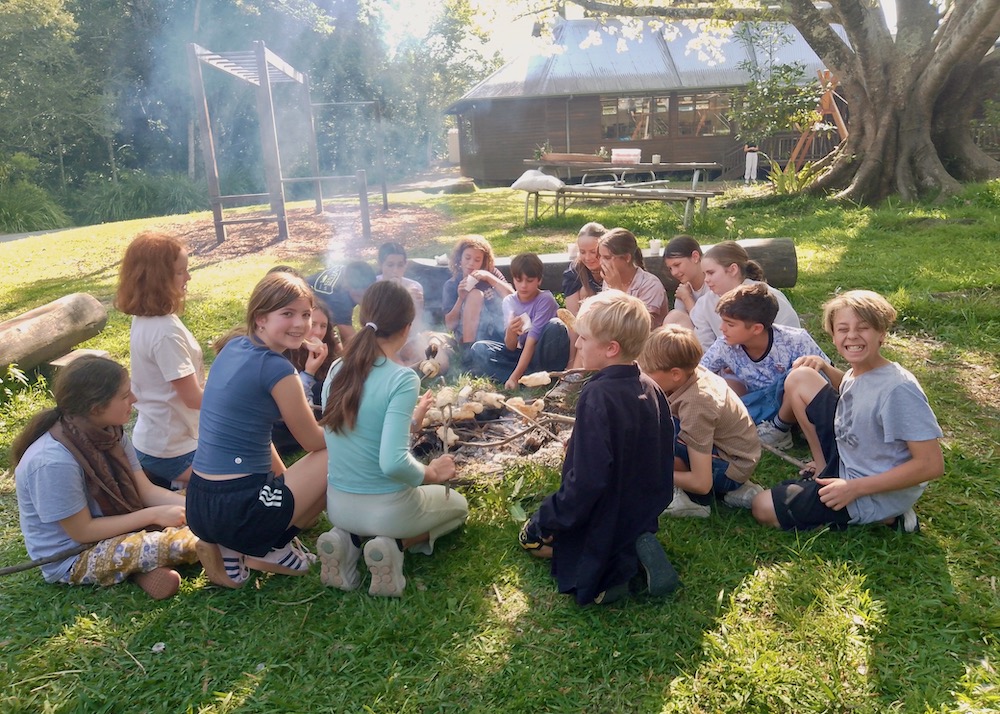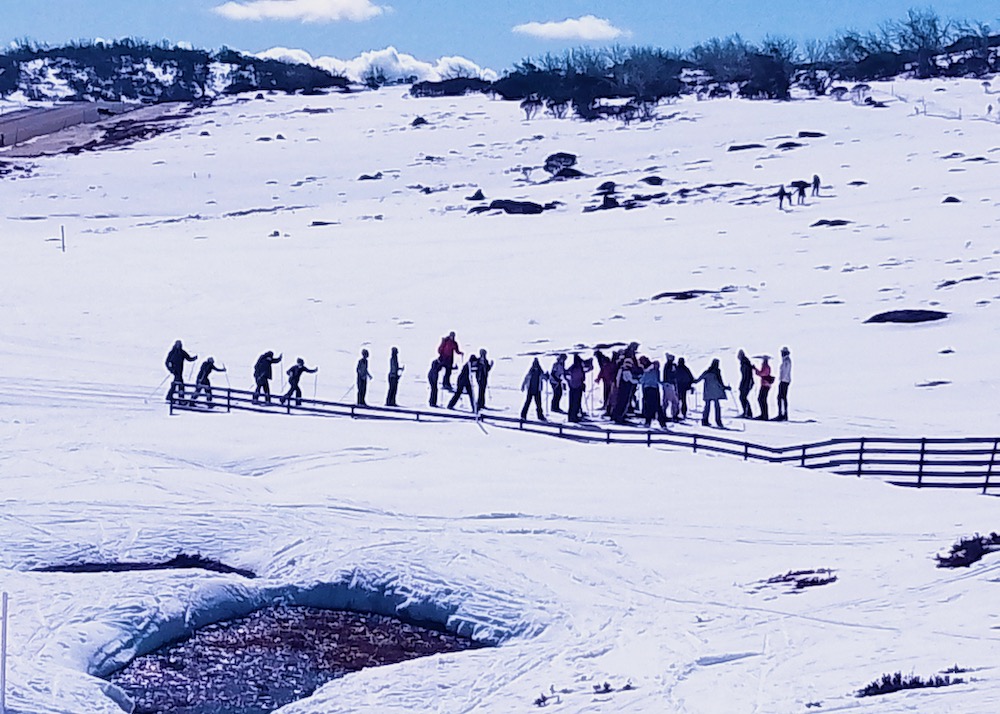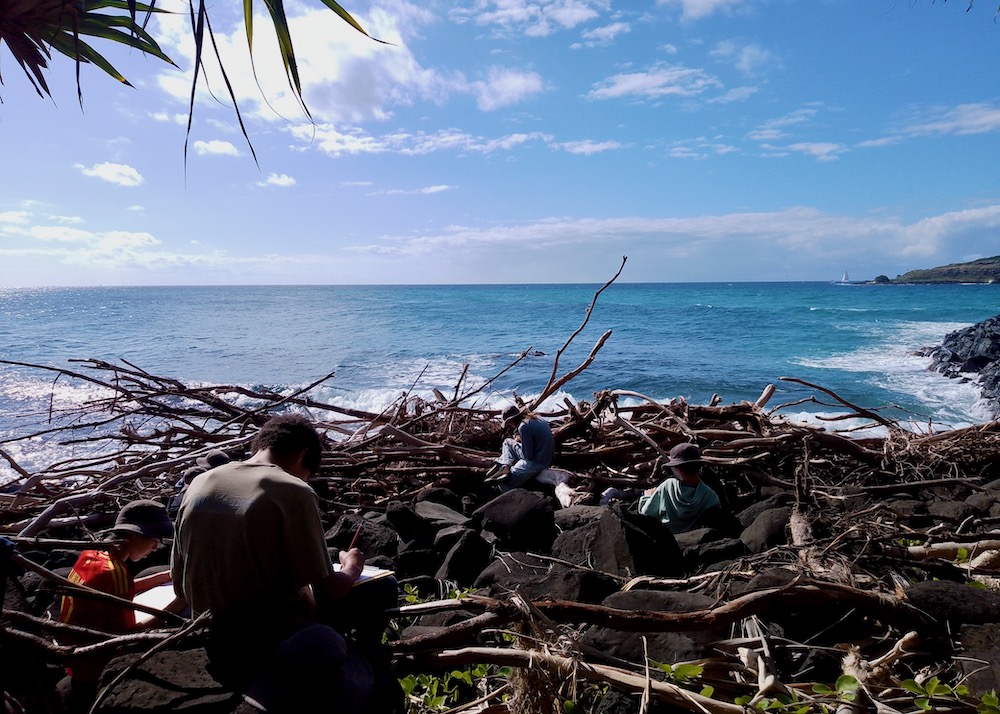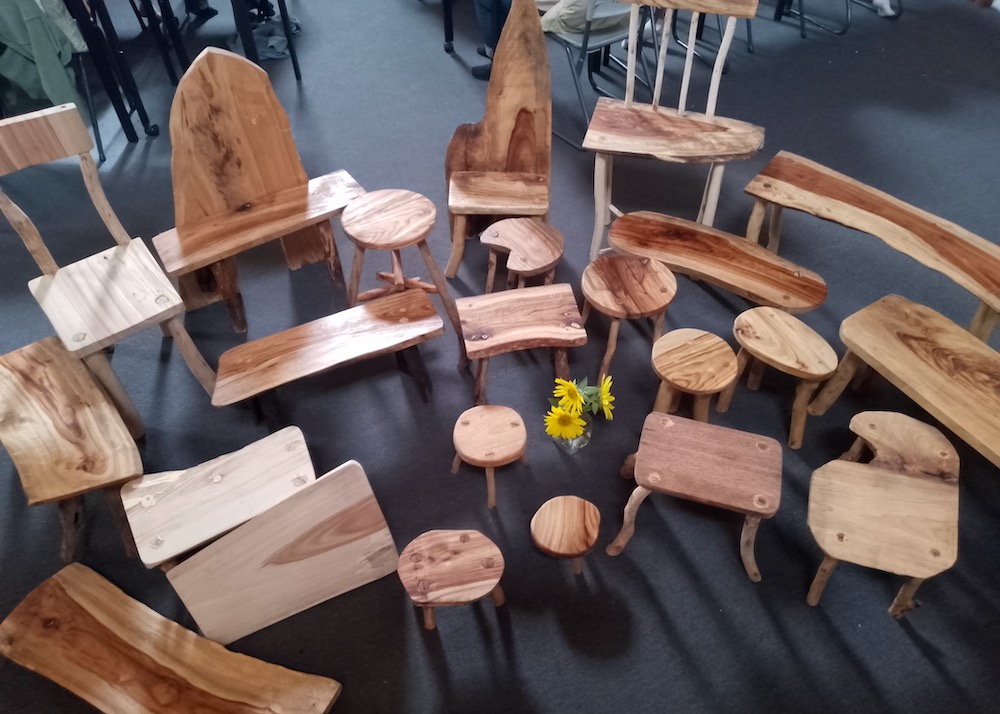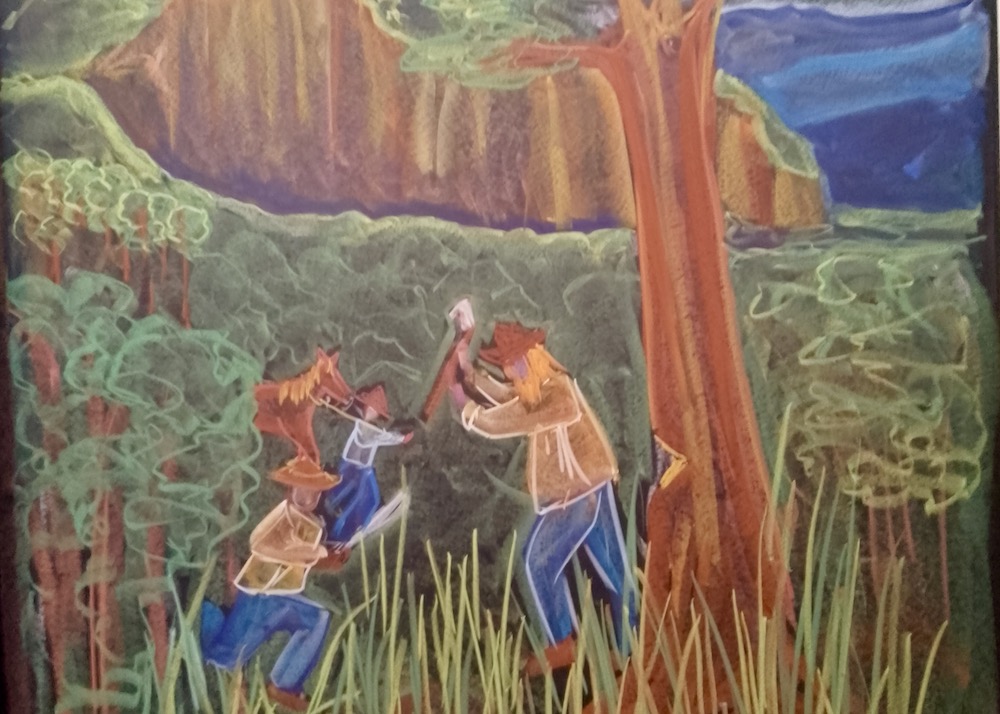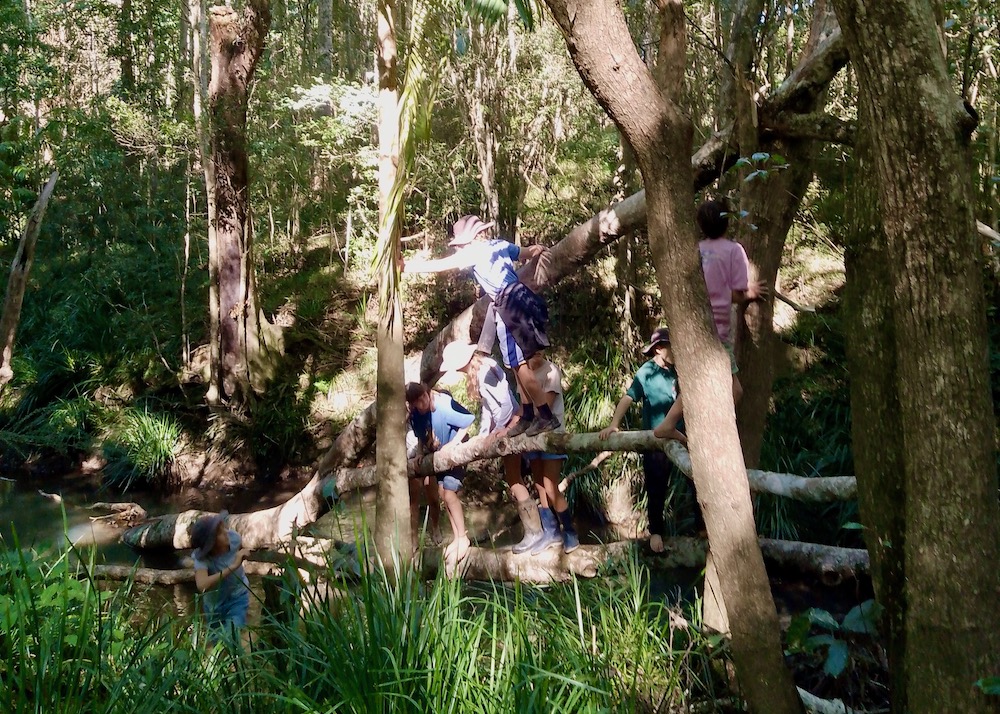In his book, Conversations with the Earth, German geologist Hans Cloos described the moment when he ‘became a geologist forever’. It happened one morning in Naples, Italy, when he opened the window in his hotel room and saw the smoking cone of Vesuvius. At that moment he had the realisation that motivated a lifetime of creative work in geology: The earth is alive!
In Class 6, volcanic cones and chevron-shaped mountain peaks are becoming more visible in the children’s artwork as puberty casts its shadow. The weight and hardness of their bodies as the skeleton becomes their ‘inner outer world’ and their bones begin to lengthen, creating a ‘lanky’ and angular physicality with awkward movements, was met through the study of Geology. The children’s attention was drawn to the hardness of the Earth and the wonderful rocks and minerals from which it is formed. Long hikes in the Warrumbungle National Park and visits to crystal caves provided living experiences of these studies, as did hammering open geodes to reveal the colour, shine and light of the hidden crystals inside. Perhaps these experiences will also create for these young people a lifelong connection to the living earth around us.
At School, the children are further guided towards a lifelong connection to the living earth through the many practical tasks they engage in. By working extensively with arts and crafts, they experience learning that speaks to both their senses and their emerging intellect. They also learn how to perceive, communicate and interact with a range of materials, such as the variety of local timbers we used recently to create bush furniture. Each wood had a different grain, weight, texture and tone, and the children got to compare these differences as they worked collaboratively to create their pieces. Each wood had, of course, come from a different tree. The pedagogical questions of the children provided an opportunity to speak of the qualities of the various woods, recall Botany lessons from last year, share the evolution of whittling, timber milling and woodturning and recall cultural stories, fertilising the soil for future lessons on the relationship of trees to the greater cosmos.
This lesson also opened an exploration of the morality of cutting trees down for our own purposes. Perhaps by transforming the timber into a practical object of beauty there is healing; a reciprocity between what the earth provides and what we offer back. Certainly the classes were salutogenic through the participation of the students who learnt new skills, whilst fully engaging their senses building a deeper relationship to the world around them and learning the value of perseverance.
Likewise, in our Optics lessons, after years of creating beeswax candles for mid-winter festivals, fostering an inner relationship to the candle, the children were guided to more thorough observations… and it took many conversations and sustained practice to really see the light!
Our gaze is now turning towards the light of the celestial sphere. The connections between human beings and the cosmic realities were known in all the ancient mysteries. Now, when I look out into the night sky, my eye is captured by the quantity of satellites circling above and my thoughts turn to the world’s decline into a material state. But there is hope. For, in the words of Novalis, we are on a mission – we are called to the cultivation of the earth… and the children’s pedagogical questions will be the shining light that guides the way towards this task.
Heather Peri
Class 6 Teacher


